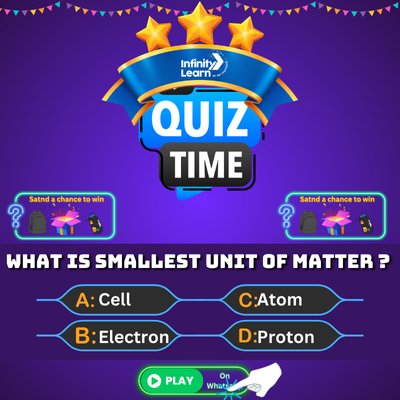Table of Contents
Introduction
Crystallography is a fascinating part of science that studies crystals and their structures. Crystals are a prominent feature of the solid state, exhibiting unique and intricate geometric arrangements. The characteristics of some materials are closely linked to their crystal formations.
This article aims to explore several key aspects related to the study of solid state chemistry. We will delve into the concept of the solid state, different types of crystals, varied lattice structures, and imperfections within crystals. The crucial role played by X-ray diffraction. Finally, we will learn about the significance of solid state chemistry in this particular field of research.
The Solid State: A Foundation for Crystallography
The solid state serves as the foundation for crystallography. In this state, matter exists as rigid and tightly packed structures, with particles maintaining fixed positions relative to each other. Solids possess unique properties, such as high density and a definite shape, which contribute to the formation of crystals.
Lattice Structures: Building Blocks of Crystals
Crystals are characterized by their highly organized arrangements of particles, known as lattice structures. Lattices are repeated patterns of points that represent the positions of particles in the crystal. Different types of crystals have distinct lattice structures, which directly influence their properties and behaviours.
Types of Crystals
Molecular Crystals
Intermolecular forces are responsible for the formation of molecular crystals, wherein discrete molecules unite together. These crystals tend to possess relatively low melting points and are predominantly discovered in organic compounds. Illustrations involve sugar, caffeine, and aspirin.
Ionic Crystals
Ionic crystals are positively and negatively charged ions arranged in a lattice structure. The strong electrostatic forces between ions hold the crystal together. Common examples of ionic crystals are table salt (sodium chloride) and calcium carbonate.
Covalent Network Crystals
Covalent network crystals consist of interconnected atoms held together by robust covalent bonds, thus creating an unbroken three-dimensional structure. Examples that epitomize such crystals include diamonds and quartz.
Metallic Crystals
Metallic crystals are characterized by a lattice structure composed of metal atoms. The delocalized electrons contribute to their unique properties, such as high electrical and thermal conductivity. Copper, iron, and gold are examples of metallic crystals.
Crystallography: Unveiling Crystal Structures
Crystallography is the science of studying crystal structures and their properties. It employs various techniques to investigate the arrangement of atoms or molecules within crystals.
X-ray Diffraction: A Powerful Tool
X-ray diffraction is a very crucial technique in crystallography.
X-rays are directed onto a crystal, and the resulting diffraction pattern provides information about the crystal’s atomic arrangement. This approach enables scientists to determine the locations of atoms within a crystal lattice.
Determining Crystal Structures
Crystallographers can determine the exact arrangement of molecules or atoms in a crystal using X-ray diffraction data and computer tools. This knowledge enables scientists to understand the crystal’s properties, predict its behaviour, and design new materials with specific functionalities.
Crystal Defects: Imperfections in the Perfect Lattice
Crystal defects are irregularities or imperfections in the crystal lattice. These defects can arise due to missing or misplaced atoms, dislocations, or impurities. Crystal defects significantly impact the properties and behaviour of crystals and play a crucial role in various technological applications.
The Role of Solid-State Chemistry
Solid-state chemistry plays a vital role in crystallography. It focuses on synthesizing, characterization, and understanding solid materials, including crystals. Solid-state chemists contribute to the development of new crystal structures, the study of crystal defects, and the exploration of novel materials with desired properties.
X-Ray Crystallography
The use of X-ray crystallography to comprehend how atoms are structured in crystals is truly remarkable. By employing X-ray diffraction, scientists can ascertain both the size and atomic arrangement of crystals’ unit cells, or building blocks. In this article, we shall discuss the immense importance of employing X ray crystallography to examine crystal structures thoroughly.
Now let us proceed to understand what takes place during X-ray diffraction.
When interacting with a crystal. X rays change their course owing to the arrangement of the constituent atoms within them. We term this phenomenon as X ray diffraction since it is a result of the wave-like behavior exhibited by X rays and their hindrance by atoms present within the crystal lattice structure. Scientists can glean substantial knowledge from scrutinizing patterns created by diffracted X rays.
Conclusion
Crystallography reveals the intricate geometrical arrangements of crystals, shedding light on their properties and behaviour. Lattice structures, X-ray diffraction, crystal defects, and solid-state chemistry are essential in understanding and manipulating crystals. The study of crystallography enriches our fundamental knowledge and drives advancements in fields such as materials science, chemistry, and technology.
FAQs on Crystallography
What is crystallography?
Crystallography is a discipline of science that studies crystal structures, including the arrangement of molecules or atoms.
What do you apprehend about the X-ray diffraction technique?
X-ray diffraction is a method that uses X-rays to research and identify the atomic arrangement within a crystal.
How do crystal defects affect the properties of crystals?
Crystal defects can influence mechanical strength, electrical conductivity, and optical behaviour. They can also be harnessed to create materials with specific functionalities.
What is the role of solid-state chemistry in crystallography?
Solid-state chemistry plays a crucial role in crystallography by contributing to the synthesis, characterization, and understanding of solid materials, including crystals.
What is solid-state crystallography?
Crystallography is an experimental study that analyzes the orderly arrangement of atoms in crystalline substances. Crystallography is an important field in materials science and solid-state physics (condensed matter physics).








